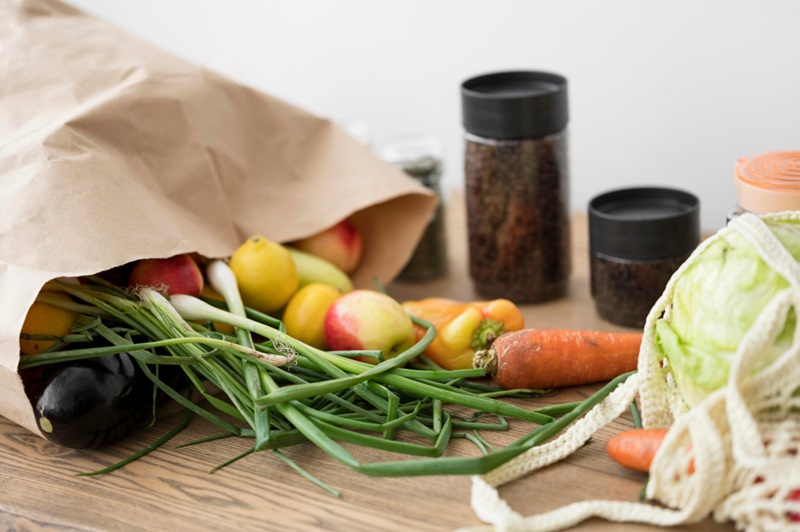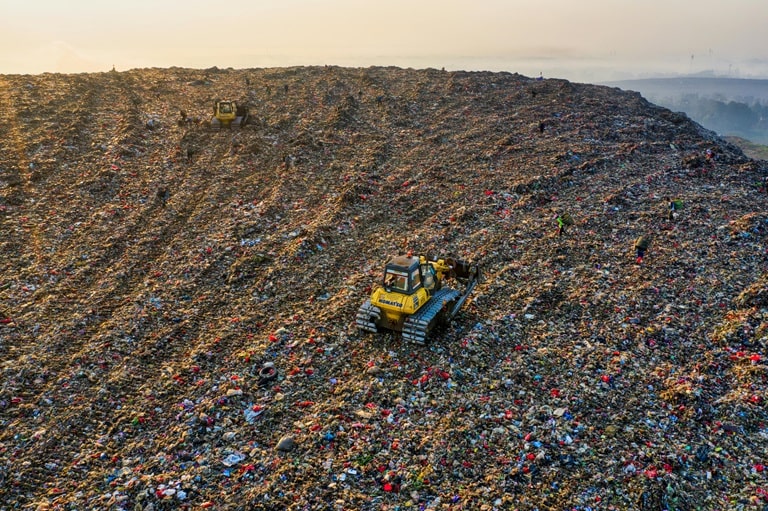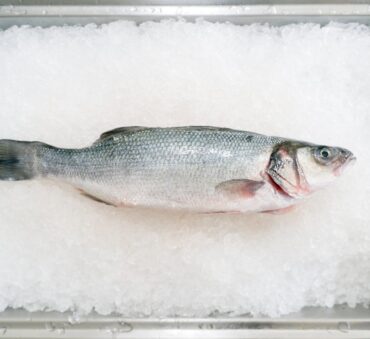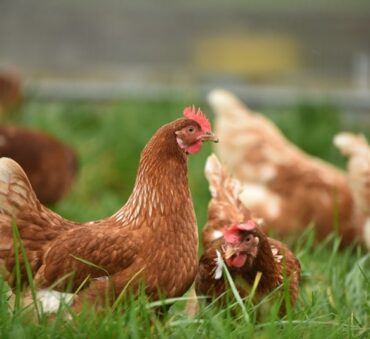America faces an unnerving challenge – a colossal mountain of food waste that speaks volumes about our consumption habits and disregard for precious resources. With food waste statistics indicating that up to 40% of the food supply is discarded annually, amounting to a staggering 91 million tons, it’s clear that we are facing a crisis of both economic and environmental proportions.
The most wasted foods, ranging from fresh produce to packaged products, symbolize not just a loss of resources but also an opportunity for change. Addressing how to reduce food waste is no longer optional; it’s an urgent necessity. This blog post seeks to unravel the complexity of this issue, offering actionable insights and strategies to mitigate one of the most pressing challenges of our time.
Key Takeaways
- Effective food waste reduction strategies span from agricultural practices to consumer behaviors.
- Technological advancements and policy reforms are key drivers in the fight against food waste.
- Reducing food waste offers substantial economic benefits and conserves environmental resources.
- Individual and community efforts play a vital role in achieving successful food waste reduction.
Understanding the Scale of the Problem
The challenge of food waste is that it spans the entire supply chain, from production to consumption. In households, it manifests as uneaten meals and expired products; in restaurants and supermarkets, it appears through surplus inventory and aesthetic selection criteria. On farms, overproduction and market fluctuations contribute to this issue.
This pervasive problem not only affects the environment through increased landfill use and greenhouse gas emissions but also highlights inefficiencies in our food systems. Economically, it represents a substantial loss, while socially, it underscores a pressing need to address food distribution and utilization, especially in the face of widespread food insecurity.
Benefits and Need to Reduce Food Waste
The drive to reduce food waste is more than an environmental gesture; it’s a practical move with tangible benefits. On the environmental front, less food waste means fewer emissions from landfills, directly cutting down on the greenhouse gases that accelerate climate change. It’s a straightforward equation: less waste, less environmental impact.
From an economic perspective, reducing food waste is equally logical. For businesses, it’s about trimming the fat – cutting unnecessary costs tied to excess production and inefficient practices. This isn’t just good for the bottom line; it’s smart business. Consumers stand to gain too, as more efficient practices in the food industry can lead to better pricing and availability.
And then there’s the social angle. In a world where hunger is still a pressing issue, the moral argument for reducing food waste is compelling. Redirecting even a fraction of our surplus can make a substantial difference in food-insecure communities. It’s about being responsible stewards of what we have.

Ways to Reduce Food Waste in Food Production
Transformation begins at the root: in the fields and farms where our food is grown. Addressing farm waste management head-on, innovative practices are being adopted to ensure that what’s grown aligns with what’s actually needed.
Optimizing Resource Use with Precision Farming
Precision farming is a key strategy in modern agricultural waste solutions, allowing for precise application of water, fertilizers, and pesticides. This approach ensures optimal crop growth and yield, reducing waste due to overproduction and resource mismanagement.
Developing Resistant Crop Varieties
Focusing on breeding crops that are resistant to pests and diseases reduces the likelihood of crop loss. This strategy is essential for ensuring a stable food supply and minimizing agricultural waste.
Enhancing Soil Health through Crop Rotation
Practicing crop rotation and prioritizing soil health are fundamental for sustainable agriculture. These methods prevent soil degradation and improve crop productivity, thereby reducing waste and enhancing overall yield.
Utilizing Technology for Crop Monitoring
The adoption of technology for monitoring crop growth and health allows farmers to respond promptly to any issues. This real-time intervention helps in preventing crop loss and reducing waste.
Balancing Production with Demand in CSA Programs
Community-supported agriculture (CSA) programs are effective in aligning production with consumer demand. By directly connecting farmers with consumers, these programs help in reducing overproduction and its consequent waste.
Controlling Food Waste with Efficient Supply Chain Management
The path food travels from farm to table is fraught with potential wastage points, but with strategic management, significant reductions in food waste are achievable.
Optimizing Logistics Routes
The first step in efficient supply chain management is optimizing logistics. By reducing transit times, we can significantly decrease the chances of spoilage, especially for perishable goods. Advanced routing software and real-time tracking systems ensure the fastest and most efficient delivery routes, reducing the time food spends in transit and, thereby, its exposure to potential spoilage conditions.
Temperature-Controlled Storage and Transportation
Maintaining the right temperature during storage and transportation is crucial for preserving food quality. Implementing temperature-controlled environments, especially for perishable goods like fruits, vegetables, dairy, and meats, can dramatically extend their shelf life. This method not only reduces food waste but also maintains the nutritional value and safety of food products.
Smart Packaging Solutions
Advancements in sustainable packaging alternatives play a huge role in extending the shelf life of food products. Smart packaging technologies that monitor the condition of the food and its environment can alert suppliers and retailers to potential spoilage issues. These technologies include modified atmosphere packaging and packaging materials that react to changes in temperature or microbial content, thus preserving food quality for longer durations.
First-Expired-First-Out (FEFO) Systems
Inventory management is key in reducing waste, and the FEFO system is particularly effective in the food industry. This approach ensures that older products are sold or used before newer ones, reducing the likelihood of having to discard items due to expiration.
Staff Training and Technology Integration
Educating staff on best practices for handling and storing food items is essential. Regular training programs can keep employees updated on the latest techniques and technologies in food preservation and waste reduction. Additionally, integrating technology into supply chain processes, such as using inventory management software, can help track food items throughout the supply chain and reduce waste.
Partnerships for Surplus Food Redistribution
Developing partnerships with local markets or charities can provide a practical solution for surplus food. Instead of discarding excess food, businesses can redirect it to those in need, contributing to community welfare and reducing waste.

Minimizing Food Waste with Retail and Supermarket Strategies
Reducing retail and supermarket food waste goes beyond mere operational adjustments—it requires a reimagining of practices and a shift in consumer engagement.
Advanced Inventory Management Systems
The adoption of sophisticated inventory management systems marks a significant step forward. These systems, leveraging data analytics and predictive algorithms, can accurately forecast demand, ensuring that stock levels are optimized. By aligning inventory with actual consumer buying patterns, supermarkets can significantly reduce the incidence of overstocking and subsequent food waste.
Promoting Products Nearing Expiration
Supermarkets can actively promote products that are nearing their expiration dates. Through discount pricing strategies and dedicated shelf space, these items can be made more attractive to customers, ensuring they are sold and consumed instead of ending up as waste. This approach not only addresses waste reduction but also offers economic benefits to both retailers and consumers.
Partnerships for Redistribution of Unsold Items
Establishing partnerships with local food banks, charities, and community organizations to redistribute unsold, yet still consumable, food items is a powerful strategy. Such alliances ensure that surplus food serves a social purpose, feeding those in need rather than contributing to landfill mass.
Customer Education and Engagement
Supermarkets have a unique opportunity to educate and engage with customers on food waste. Initiatives can include in-store educational campaigns, workshops on food preservation, and guidance on how to reduce waste at home. By fostering a community of informed consumers, supermarkets can ignite a broader change in attitudes towards food consumption and waste.
Innovative Packaging and Presentation Strategies
Exploring innovative packaging solutions that extend the shelf life of products, coupled with creative presentation strategies, can also shift change for the better. For instance, selling loose fruits and vegetables can reduce packaging waste and allow consumers to purchase exactly the amount they need, minimizing household food waste.
Reducing Waste in Restaurants and Hospitality
Similarly, food waste in restaurants and the broader hospitality industry is substantial, but there are several targeted strategies that can make a large impact.
Menu Planning and Portion Control
Thoughtful menu planning helps align food preparation with actual customer demand, reducing the likelihood of excess. Likewise, offering portion sizes that reflect customer preferences can minimize leftover food on plates.
Waste Tracking Systems
Incorporating systems to track and analyze food waste helps identify areas where improvements can be made. This approach provides valuable insights into which items are frequently wasted, guiding menu adjustments and kitchen practices.
Staff Training and Customer Education
Educating staff about the importance of reducing food waste and effective ways to achieve it ensures that the entire team contributes to waste reduction efforts. Informing customers about food waste can also raise awareness and encourage them to participate in reduction initiatives.
Take-Home Options for Leftovers
Encouraging customers to take leftovers home with eco-friendly packaging can significantly cut down on waste while enhancing customer service.
Participation in Food Recovery Programs
Engaging in food recovery programs by donating unsold, safe-to-eat food to local charities not only helps those in need but also addresses the issue of food waste constructively.

Tips to Reduce Food Waste at Home
When it comes to household food waste, it’s about making small changes that can lead to big impacts, both environmentally and economically.
Understand Expiration Dates
A common misconception about expiration dates leads to unnecessary food waste . ‘Best before’ and ‘use by’ dates are often conservative estimates. Trust your senses; if it looks, smells, and tastes fine, it’s probably safe to eat.
Effective Meal Planning
Plan your meals for the week and purchase only what is necessary. This helps in reducing impulsive buying and ensures that you use what you have, reducing the chances of food going to waste.
Smart Shopping
Stick to a shopping list based on your meal plan. This focused approach minimizes the risk of buying excess food, which might end up being wasted.
Proper Food Storage
Correct storage can significantly extend the life of your food. Learn the best ways to store different types of food to maintain freshness and prevent spoilage.
Embrace Leftovers
Leftovers can be a creative challenge rather than a chore. Think of ways to repurpose them into new meals, reducing the likelihood of food ending up in the bin.
Utilize Your Freezer
Freezing is an excellent way to prolong the life of many foods, from bread to meat and even some fruits and vegetables. It’s a great way to save food that you can’t use immediately.
Composting
For food scraps that can’t be eaten, composting is an excellent way to recycle them back into the soil, enriching it for future use.
Don’t Over-Cater Over the Holidays
Holidays can be a time of excess, including food. To navigate holiday food waste wisely, shop according to a list and store leftovers properly to reduce waste during these festive times.
Technological Innovations and Future Directions
The fight against food waste is seeing significant contributions from advanced technologies. The emergence of artificial intelligence (AI), the Internet of Things (IoT), and data analytics is reshaping our approach to managing food waste across various sectors.
AI in Demand Prediction and Optimization
AI is being used to analyze consumption patterns and predict demand with greater accuracy. This application is particularly useful in helping supermarkets and restaurants manage inventory, reducing the risk of overstocking and subsequent waste. Similarly, machine learning is enhancing food delivery logistics, leading to less spoilage and more efficient distribution.
IoT for Enhanced Food Tracking and Storage
IoT technologies are enabling better monitoring of storage conditions. With sensors in warehouses and transport vehicles, it’s possible to track environmental conditions like temperature and humidity, which are crucial for maintaining food quality. This real-time monitoring is crucial for extending the shelf life of perishable items.
Advances in Smart Packaging
Packaging technology has seen notable innovations. Sensors in packaging can indicate food quality, such as spoilage levels or ripeness. This information helps consumers make better decisions on food usage, aiming to reduce waste at the household level.
Looking Ahead
The future holds promise for the integration of these technologies to create more robust solutions. The potential for widespread data sharing and analysis can bring significant improvements to how food supply chains are managed. Consumer-focused applications are also evolving, offering features like tracking food purchases and suggesting recipes to utilize available ingredients, thus minimizing household waste.
The synergy of food waste technologies and sustainable practices represents a growing area ripe for exploration and development. While technology is not the sole answer to the food waste dilemma, it is an indispensable part of a comprehensive strategy that includes policy reform, consumer education, and a shift in cultural practices surrounding food.

Governmental Regulations & Laws
Food waste laws in the U.S. play a significant role in guiding the nation’s approach to reducing food waste. These laws encompass a spectrum of strategies, from tax incentives designed to motivate businesses to donate surplus food to stringent waste disposal guidelines emphasizing composting and recycling over traditional landfill methods. At the state level, specific regulations can mandate substantial waste producers to adhere to practices that minimize environmental impact, demonstrating a commitment to sustainable waste management. This regulatory framework is crucial in steering both corporate and individual actions towards a more responsible handling of food waste.
The Bottom Line
Reflecting on the strategies and insights presented, it’s evident that minimizing food waste is an achievable goal, requiring thoughtful approaches and sustained efforts across various sectors. From innovative agricultural practices to smarter consumer habits, each step in addressing this issue is a step towards environmental and economic sustainability.
Partnering with Shapiro offers businesses a sustainable and effective solution to prevent large-scale food waste. Our approach integrates cutting-edge technology with best practices in supply chain management, ensuring that food resources are utilized optimally. Shapiro’s expertise in logistics and waste reduction strategies not only supports environmental sustainability but also enhances operational efficiency, resulting in cost savings and improved business performance. By working with us, businesses can confidently contribute to a more sustainable future, ensuring that food resources are managed responsibly and efficiently.
FAQs
Reducing food waste is integral for both environmental and economic reasons. Environmentally, it reduces landfill use and greenhouse gas emissions. Economically, it minimizes loss and inefficiency in the food supply chain, saving resources. Socially, it allows for better distribution of food, aiding communities in need, and promoting responsible consumption.
Food waste presents several challenges. It contributes to environmental issues, such as increased landfill usage and greenhouse gas emissions. Economically, it signifies a loss of resources expended in food production, processing, transportation, and disposal. On a social level, it underscores the imbalance in food distribution, with significant waste coexisting with prevalent food insecurity.
Food waste stems from various factors across the supply chain. At the production level, factors include overproduction and imperfect harvesting techniques. In supply and retail, inefficiencies in storage, transportation, and unsold inventory contribute. At the consumer level, poor planning, overbuying, and misunderstanding of expiration dates lead to waste.
To reduce food-related issues, we can:
1. Improve agricultural practices and technology to better match production with demand.
2. Optimize supply chain efficiency with improved logistics, storage, and packaging.
3. Raise consumer awareness about smart purchasing, effective storage, and innovative use of leftovers.
4. Develop and support policies and initiatives that facilitate the redistribution of excess food to those in need.
Innovative methods to reduce food waste include:
1. Using smartphone apps to monitor food expiration and assist with meal planning.
2. Participating in or starting community composting for unavoidable waste.
3. Organizing ‘potluck’ gatherings to utilize ingredients nearing expiration.
4. Crafting recipes tailored to leftover ingredients.
5. Repurposing food scraps for garden compost or as natural cleaning products.
Baily Ramsey, an accomplished marketing specialist, brings a unique blend of anthropological insight and marketing finesse to the digital landscape. Specializing in educational content creation, she creates content for various industries, with a particular interest in environmental initiatives.



